With third Meteosat Second Generation (MSG-3) set to liftoff on 5 July from Europe’s Spaceport in Kourou, French Guiana, the team on site has be busy over the last weeks preparing the satellite for launch.
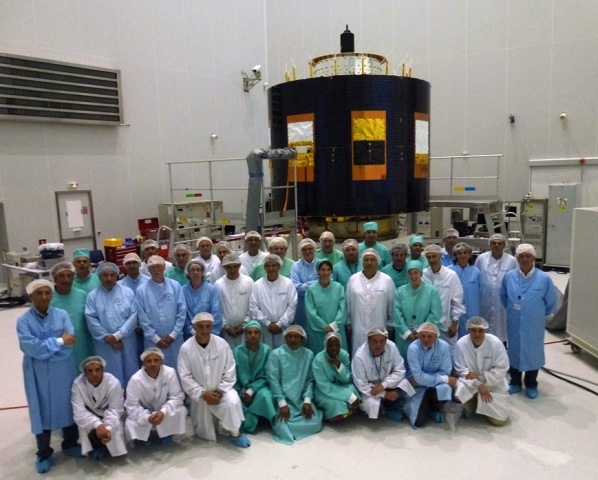
The MSG-3 launch campaign team from Thales Alenia Space, Eumetsat, ESA and the European Spaceport ‘CSG’. (credits: Arianespace)
Most recently, the launch adapter has been thoroughly inspected. The adapter is an essential component as it connects the launcher with the satellite. A clamp band secures satellite to the adapter.
A few minutes after launch, the clamp band opens and six springs around the upper ring push the satellite away from the adapter. This is a critical stage of the launch sequence, signalling ‘separation’. Engineers from Thales Alenia Space have carefully checked the position of the accelerometers that record the shocks to the lower part of the satellite when the launcher fairing and clamp band open.
The next step is to join or ‘mate’ the MSG-3 satellite to the adapter.
Earlier this week, marked a new phase of the launch campaign called POC, which stands for Plan d’Opération Combiné or Combined Operation Plan and marks ‘Launch minus 12 working days’.
So, from 19 June all the launch activities in the preparation facilities follow very careful planning under the leadership of Arianespace. Tasks are defined by the hour as well as by the day and each is carefully assigned. Daily meetings take place where the green light is given for activities the following day.
Since the EchoStar 17 telecommunication satellites is being launched with MSG-3 on the Ariane 5 rocket, it is also included in the POC. In fact, EchoStar will be the first to be integrated in the launcher fairing.
Before integration on the launcher, MSG-3 was fuelled with oxidizer (Mixed Oxides of Nitrogen, MON) and fuel (Monomethyl Hydrazine, MMH).
Owing to the toxicity of these products, this operation is carried out by specialists who wear SCAPE (Self Contained Atmospheric Protective Ensemble) suits. Two teams of two operate in four-hour shifts. To ensure no mistakes are made, each fuelling technician is checked by the other team member present and also monitored from the control room.
Stabilisation phases are necessary between injections to make sure that propellants are equally split between the tanks. During these stabilisation phases, the team remains in the hall and take time to recover from the exhausting (physically and mentally) injection phase.
In the photo below, which was taken from the monitor screens in the control room, we can see one of the team resting his head – the weight of the heavy helmet is particularly tiring.
The fuelling took three days and was completed on 21 June. In total, 601.5 kg of MON and 365.5 kg of MMH were loaded, bringing the total mass of MSG-3 to 2031.7 kg.
Prior to fuelling the exact dry mass of the MSG-3 satellite had to be determined. The dry mass, added to the mass of propellant plus/minus the few red and green tag items to be added and removed for launch, provides the exact mass of the spacecraft at launch.
The dry mass is calculated with a method called double weighing to eliminate and chance of error. The principle involves using a calibrated load cell to make two measurements and then this is repeated.
The dry mass was calculated at 1064.6 kg.
The photos below show a few of the milestones in the launch campaign prior to the mass test.

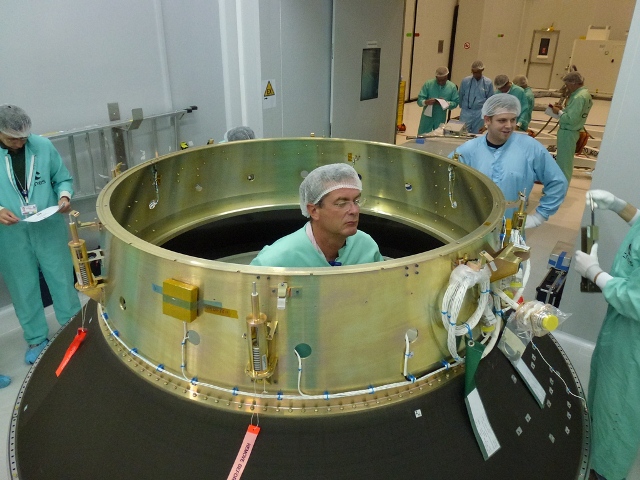
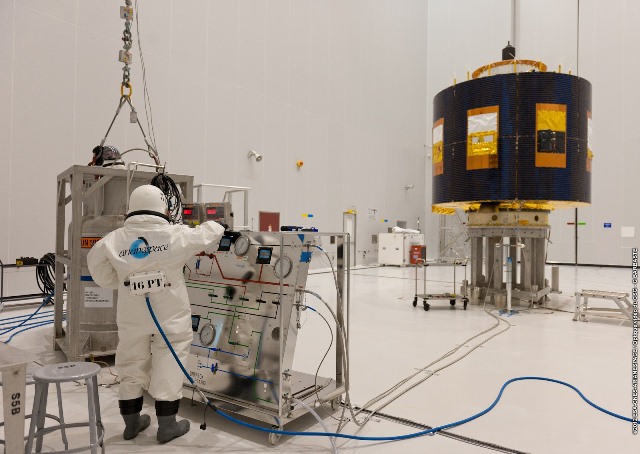
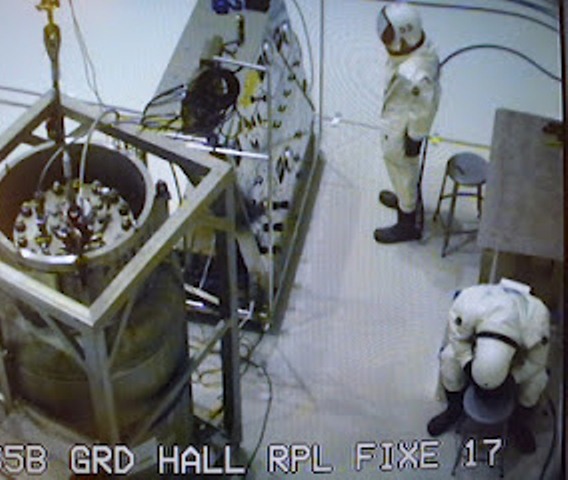
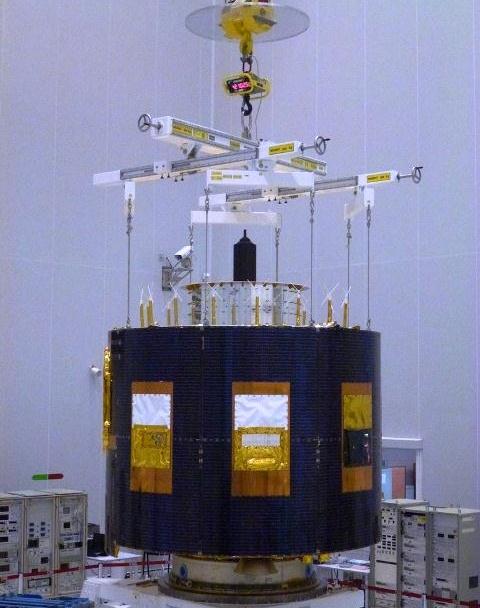



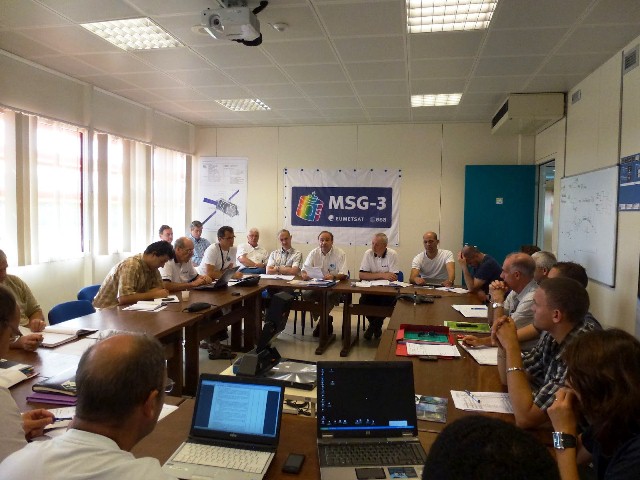
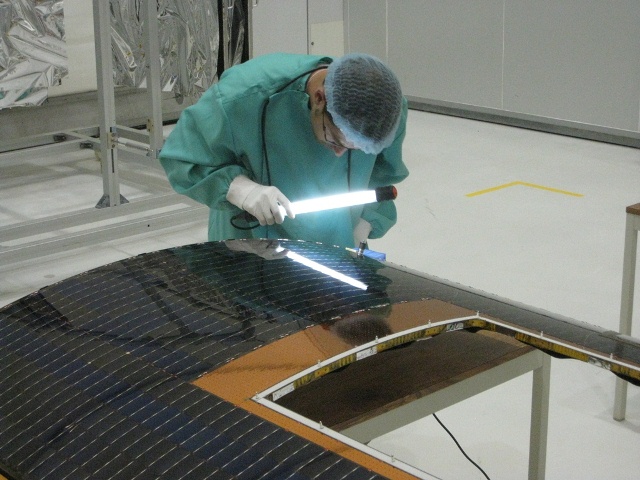

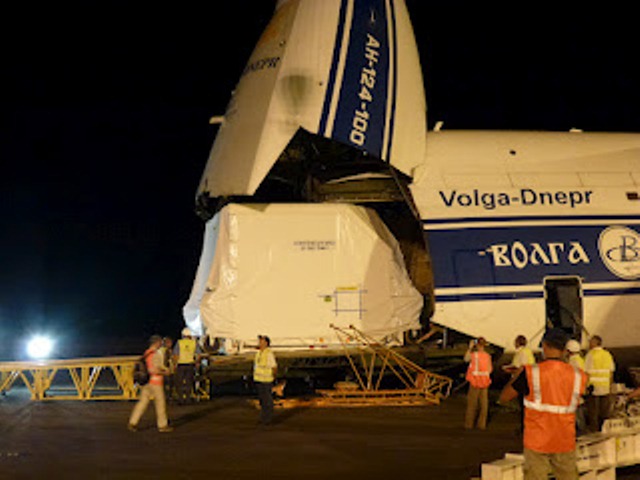
Discussion: no comments